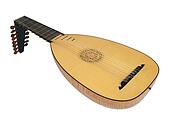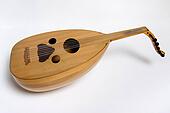Renaissance means rebirth. They were interested in Ancient Greece and Rome. There were many voyages of discovery, and scientific advances.
Composers of the Period
| Composer | Nationality | Composer | Nationality |
|---|---|---|---|
| Josquin | Netherlands | Downland* | English |
| Lassus | Netherlands | Welkes | English |
| Tallis* | English | Gibbons | English |
| Byrd* | English | Palestrina* | Italy |
| Morley* | English | G. Gabriela* | Italy |
| Bull | English | Monterverde* | Italy |
The composers marked with asterisks are the most important to know.
Church Music
The style of renaissance church music is described as choral polyphony (polyphonic, counterpoint, contrapuntal), meaning more than one part. Homophonic means moving in chords. Monophonic means one melody line. Choral polyphony was intended to be sung a cappella (without instruments). The main forms were the mass and the motet. They had four parts, based on modes, but composers gradually added more accidentals.
One of the most noticeable differences between Medieval and Renaissance styles, is that of musical texture. Whereas a Medieval composer tended to contrast the separate strands of his music, a Renaissance composer aimed to blend them together. Instead of building up the texture layer by layer, he worked gradually through the piece, attending to all parts simultaneously. The key device used to weave this kind of texture is called imitation. Composers were becoming more interested and aware of harmony (how notes fit against each other).
German Chorales
German Chorales are Protestant hymns.
Secular Music
This was music independent of churches (i.e. none religious). The main type was the song, lied (German), frottola (Italian), chanson (French), madrigal (Italian) and villancico (Spanish).
Elizabethan Madrigals
In 1588 a collection of Italian Madrigals with English words was published in England, and it sparked off an interest in English Madrigal writing. They were performed in rich people's homes. There are three kinds of madrigal:
- The Madrigal Proper - This kind was 'through-composed' (The music is different all the time.) There is a lot of word-painting music that illustrates words. E.g. Thomas Weelkes 'As Vesta was from Latmos Hill descending.
- The Ballett - It was sometimes danced as well as sung. The texture is mainly chordal. Whereas a madrigal proper is through-composed, a ballett is strophic (two or more verses set to the same music. The most noticeable feature of a ballett is the 'fa-la-la' refrain.
- The Ayre - An Ayre could be performed in a variety of ways: By solo voice with lute accompaniment; by a solo voice with other accompaniment (e.g. viols); all the parts sung by voices (with or without instruments).



No comments:
Post a Comment